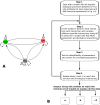Can Immune Response Mechanisms Explain the Fecal Shedding Patterns of Cattle Infected with Mycobacterium avium Subspecies paratuberculosis?
- PMID: 26808389
- PMCID: PMC4725749
- DOI: 10.1371/journal.pone.0146844
Can Immune Response Mechanisms Explain the Fecal Shedding Patterns of Cattle Infected with Mycobacterium avium Subspecies paratuberculosis?
Abstract
Johne's disease (JD) is a chronic disease in ruminants and is caused by infection with Mycobacterium avium subspecies paratuberculosis (MAP). At late stages of the disease, MAP bacilli are shed via feces excretion and in turn create the potential for oral-fecal transmission. The role of the host immune response in MAP bacteria shedding patterns at different stages of JD is still unclear. We employed mathematical modeling to predict if the variation in MAP shedding could be correlated to the immune response in infected animals. We used a novel inverse modeling approach that assumed biological interactions among the antigen-specific lymphocyte proliferation response (cell-mediated response), antibody/humoral immune responses, and MAP bacteria. The modeling framework was used to predict and test possible biological interactions between the measured variables and returns only the essential interactions that are relevant in explaining the observed cattle MAP experimental infection data. Through confronting the models with data, we predicted observed effects (enhancement or suppression) and extents of interactions among the three variables. This analysis enabled classification of the infected cattle into three different groups that correspond to the unique predicted immune responses that are essential to explain the data from cattle within these groups. Our analysis highlights the strong and weak points of the modeling approach, as well as the key immune mechanisms predicted to be expressed in all animals and those that were different between animals, hence giving insight into how animals exhibit different disease dynamics and bacteria shedding patterns.
Conflict of interest statement
Figures





References
-
- Olsen I, Sigurðardóttir Ó, Djønne B. Paratuberculosis with special reference to cattle A review. Veterinary quarterly. 2002;24(1):12–28. - PubMed
-
- Whittington R, Sergeant E. Progress towards understanding the spread, detection and control of Mycobacterium avium subsp paratuberculosis in animal populations. Australian Veterinary Journal. 2001;79(4):267–78. - PubMed
-
- Whitlock RH, Buergelt C. Preclinical and clinical manifestations of paratuberculosis (including pathology). Veterinary Clinics of North America-Food Animal Practice. 1996;12(2):345–56. - PubMed
Publication types
MeSH terms
LinkOut - more resources
Full Text Sources
Other Literature Sources
Medical

